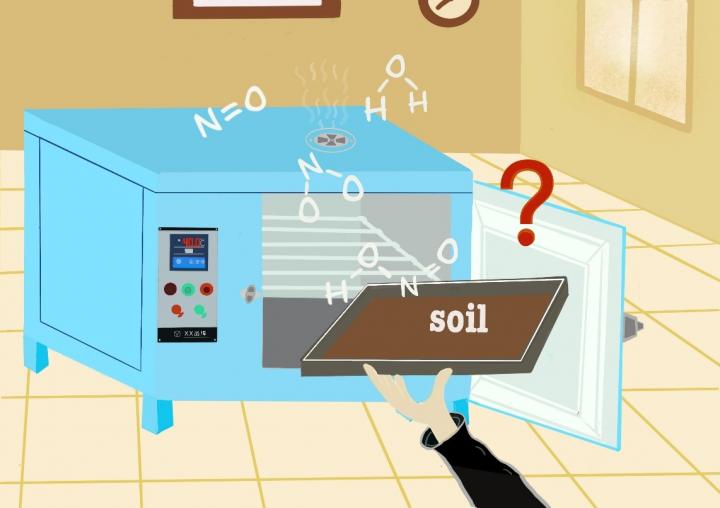
Credit: Dianming Wu
Earth’s atmosphere and climate change are strongly affected by gas exchange between land and atmosphere. Reactive nitrogen (Nr) gas emissions from soils, e.g., nitrous acid (HONO) and nitric oxide (NO), play a significant role in atmospheric chemistry and also constitute a key process of the global nitrogen (N) cycle.
To understand the underlying mechanisms of soil Nr emissions, air-dried or oven-dried soils are commonly used in the laboratory. To date, few studies have compared the effects of different drying methods on soil Nr gas fluxes and N fractions.
In a paper recently published in Atmospheric and Oceanic Science Letters, Dr. Dianming Wu, from the School of Geographic Sciences, East China Normal University, and his coauthors, try to identify the best approach to treat soil samples.
“We evaluated soil water content, pH, (in)organic N content, and Nr gas fluxes of air-dried, freeze-dried, oven-dried, and fresh soils from different land-use types,” says Dr. Wu.
According to this study, all drying methods increased the soil ammonium, nitrate, and dissolved organic N contents compared with fresh soil. However, freeze-dried soil had the closest soil pH value, the maximum HONO and NO flux and total emissions during a full wetting-drying cycle with fresh soil, while air-drying and oven-drying significantly increased Nr gas fluxes. Therefore, global soil Nr gas emissions might be overestimated if air- and oven-dried soil are used.
The study concludes that all drying methods should be considered for use in studies on the land-atmosphere interface and biogeochemical N cycling, whereas the freeze-drying method might be better for studies involving the measurement of soil Nr gas fluxes.
“The important implication of the finding is that we need to carefully evaluate the previous understanding of the mechanism of biogeochemical nitrogen cycling based on different drying methods,” concludes Dr. Wu.
###
Media Contact
Ms. Zheng Lin
[email protected]
86-108-299-5053
Original Source
http://159.
Related Journal Article
http://dx.




